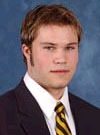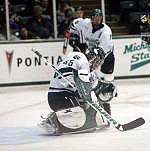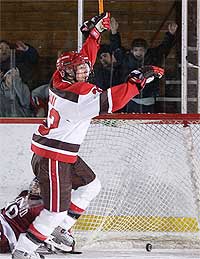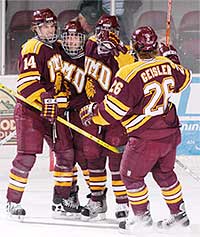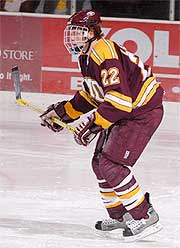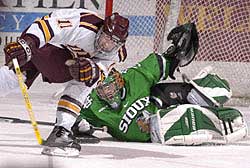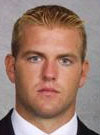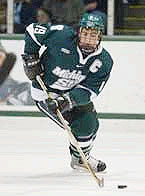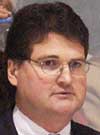Just when you thought things were getting easier, they aren’t. After last weekend, you thought you had it all figured out. You had your travel plans made, hotels booked, and what happens?
The games.
With one more week gone by, it’s time for our regular look at how the NCAA tournament might shake out if the season ended today. It’s something we call “Bracketology” — a look into the thought process behind selecting and seeding the NCAA tournament.
This is the fifth installment; we’ll be bringing you a new one every week until our final picks just before Selection Sunday. If you take a look at the sidebar, you’ll see our brackets from last week and you can compare and contrast on your own.
Here are the facts:
Here are the NCAA’s guidelines on the matter, per a meeting of the Championship Committee:
In setting up the tournament, the committee begins with a list of priorities to ensure a successful tournament on all fronts including competitive equity, financial success and likelihood of playoff-type atmosphere at each regional site. For the model, the following is a basic set of priorities:
Additionally, the NCAA recently clarified its selection criteria to include a bonus factor in the Ratings Percentage Index (RPI) for “good” nonconference wins.
And one more note: Massachusetts-Lowell’s forfeits have not been taken into account because the NCAA has not taken official action. Therefore, the results of the games played are used here. However, it is unlikely that the NCAA will change the results.
Given these facts, here are the top 15 of the current PairWise Rankings (PWR), plus Holy Cross and Bemidji State, the current leaders in Atlantic Hockey and the CHA (through games of March 10, 2004):
1 North Dakota
1 Boston College
1 Maine
4 Minnesota-Duluth
5 Minnesota
6 Denver
7 Michigan
8 Wisconsin
8 New Hampshire
8 Miami
11 Ohio State
12 Michigan State
12 Colgate
14 Notre Dame
15 St. Cloud State
27 Bemidji State
28 Holy Cross
The principal difference is that even though North Dakota swept Michigan Tech and Maine swept Boston College, there is now a three-way tie for first.
Denver makes the biggest move as its sweep of Colorado College propelled the Pioneers to number six. And Notre Dame’s split with Lake Superior did not help the Irish at all. Colgate, while not playing last weekend, jumps into a tie for the number 12 spot.
Step One
From the committee’s report, choose the 16 teams in the tournament.
We break ties in the PWR by looking at the individual comparisons among the tied teams, and add Holy Cross and Bemidji State.
From there, we can start looking at the bubble and ties in a more detailed fashion.
There are three ties to break this week, at number one, eight and 12.
Let’s look first at the tie at number 12 between Colgate and Michigan State. Head-to-head, Michigan State wins the comparison, so Michigan State is 12 and Colgate is 13. That is a huge tiebreak, because that’s the difference between a three and a four seed.
Now we’ll move to the tie at eight between Wisconsin, New Hampshire and Miami. At stake, a two seed. It’s a full round-robin, folks and it’s circular. Oh, what to do? Break it on RPI, which is how the committee is expected to do it. Wisconsin is therefore eight, UNH nine and Miami 10.
Now we move to the top spot. Once again it’s circular among North Dakota, Boston College and Maine. Again, let’s use RPI to break the tie: North Dakota, then Boston College, then Maine.
Thus, the 16 teams in the tournament, in rank order, are:
1 North Dakota
2 Boston College
3 Maine
4 Minnesota-Duluth
5 Minnesota
6 Denver
7 Michigan
8 Wisconsin
9 New Hampshire
10 Miami
11 Ohio State
12 Michigan State
13 Colgate
14 Notre Dame
15 Bemidji State
16 Holy Cross
Step Two
Assign the seeds:
No. 1 Seeds — North Dakota, Boston College, Maine, Minnesota-Duluth
No. 2 Seeds — Minnesota, Denver, Michigan, Wisconsin
No. 3 Seeds — New Hampshire, Miami, Ohio State, Michigan State
No. 4 Seeds — Colgate, Notre Dame, Bemidji State, Holy Cross
Step Three
Place the No. 1 seeds in regionals, starting with No. 1 North Dakota.
North Dakota is placed in the West Regional.
Boston College is placed in the Northeast Regional.
Maine is placed in the East Regional.
Minnesota-Duluth is placed in the Midwest Regional.
This hasn’t changed in a while. It’s still all pretty much the same.
Step Four
Now we place the other 12 teams, eventually so as to avoid intraconference matchups.
Begin by filling in each bracket by banding groups. Remember that in these bands, teams are not assigned to the regional closest to their campus sites (unless you are a host school, in which case you must be assigned to your home regional). Instead, the seeds are set such that the quarterfinals are played by No. 1 v. No. 8, No. 2 v. No. 7, No. 3 v. No. 6 and No. 4 v. No. 5.
Therefore:
No. 2 Seeds
No. 8 Wisconsin goes to No. 1 North Dakota’s Regional, which is the West Regional
No. 7 Michigan goes to No. 2 Boston College’s Regional, which is the Northeast Regional
No. 6 Denver goes to No. 3 Maine’s Regional, which is the East Regional.
No. 5 Minnesota goes to No. 4 Minnesota-Duluth’s Regional, which is the Midwest Regional.
No. 3 Seeds
Making the same analysis, the first-round matchups should be No. 9 v. No. 8, No. 10 v. No. 7, etc., so:
No. 9 New Hampshire, as the host, goes to No. 7 Michigan’s Regional, which is the Northeast Regional.
No. 10 Miami goes to No. 8 Wisconsin’s Regional, which is the West Regional.
No. 11 Ohio State goes to No. 6 Denver’s Regional, which is the East Regional.
No. 12 Michigan State goes to No. 5 Minnesota’s Regional, which is the Midwest Regional.
No. 4 Seeds
One more time, taking No. 16 v. No. 1, No. 15 v. No. 2, etc.
No. 16 Holy Cross goes to No. 1 North Dakota’s Regional, which is the West Regional.
No. 15 Bemidji State goes to No. 2 Boston College’s Regional, which is the Northeast Regional.
No. 14 Notre Dame goes to No. 3 Maine’s Regional, which is the East Regional.
No. 13 Colgate goes to No. 4 Minnesota-Duluth’s Regional, which is the Midwest Regional.
The brackets as we have set them up:
Midwest Regional:
13 Colgate vs. 4 Minnesota-Duluth
12 Michigan State vs. 5 Minnesota
West Regional:
16 Holy Cross vs. 1 North Dakota
10 Miami vs. 8 Wisconsin
East Regional:
14 Notre Dame vs. 3 Maine
11 Ohio State vs. 6 Denver
Northeast Regional:
15 Bemidji State vs. 2 Boston College
9 New Hampshire vs. 7 Michigan
Our first concern is avoiding intraconference matchups. We have none. Can you repeat that? Wow.
Now let’s consider other issues.
We’ve said in the past that we would love to get Denver in the West Regional. But can that happen? We could switch Denver with Minnesota and Wisconsin. That doesn’t interfere with the integrity of the seeds too much. Likewise, to improve attendance at Albany, we can switch Colgate and Notre Dame. We also switch Bemidji State and Holy Cross for travel purposes.
So our brackets as of right now are:
Midwest Regional:
14 Notre Dame vs. 4 Minnesota-Duluth
12 Michigan State vs. 8 Wisconsin
West Regional:
15 Bemidji State vs. 1 North Dakota
10 Miami vs. 6 Denver
East Regional:
13 Colgate vs. 3 Maine
11 Ohio State vs. 5 Minnesota
Northeast Regional:
16 Holy Cross vs. 2 Boston College
9 New Hampshire vs. 7 Michigan
I’m going to tweak the system one more time. Let’s go back to how we broke the ties. Remember that we had a tie at 12 with Michigan State and Colgate? Look right above them — Ohio State is just one comparison win above the two. There is a discernable bubble right there.
For the fun of it, let’s put all three of those teams in a head-to-head-to-head comparison. We see that Michigan State wins two comparisons and Ohio State one. So if you look at it this way, Michigan State could be the 11 seed, not the 12 seed, and Ohio State is the 12 seed, not the 11 seed.
So now we’ve made the bracket a little more ordered.
Midwest Regional:
14 Notre Dame vs. 4 Minnesota-Duluth
11 Michigan State vs. 8 Wisconsin
West Regional:
15 Bemidji State vs. 1 North Dakota
10 Miami vs. 6 Denver
East Regional:
13 Colgate vs. 3 Maine
12 Ohio State vs. 5 Minnesota
Northeast Regional:
16 Holy Cross vs. 2 Boston College
9 New Hampshire vs. 7 Michigan
That’s our bracket this week without the bonus.
Bracketing the Frozen Four, if all four number-one seeds advance, then the top overall seed plays No. 4, and No. 2 plays No. 3. Therefore, the winners of the Midwest and West Regionals face each other in one semifinal (Minnesota-Duluth and North Dakota’s brackets), while the winners of the East and Northeast Regionals (Maine and Boston College’s brackets) play the other semifinal.
But, we may have just wasted all our time and brainpower because…
Bonus Time
We know there is a bonus component to the criteria, the NCAA’s tweak to the system which rewards “good” nonconference wins.
Without official word on the size of the bonuses, we take these numbers: .005 for a good road win, .003 for a good neutral win and .001 for a good home win, and then we break ties using the method as above.
Does anything change? Absolutely.
1 Boston College
2 Maine
3 North Dakota
4 Minnesota-Duluth
5 Minnesota
6 Denver
6 Michigan
8 Wisconsin
9 New Hampshire
9 Miami
11 Ohio State
12 Colgate
13 Notre Dame
13 Michigan State
15 St. Cloud State
27 Bemidji State
28 Holy Cross
That three-way tie for first is broken with BC coming out on top, Maine second and North Dakota third. Colgate also moves up into a third seed. Bemidji State moves ahead of Holy Cross here and St. Cloud is still out in this bonus.
Let’s break the ties here. At six, Denver wins the head-to-head, so the Pioneers get the sixth seed and Michigan the seventh.
At 13 Notre Dame defeats Michigan State head-to-head, so Notre Dame is 13 and Michigan State is 14.
There is a tie at nine, so let’s break it. But hold on a minute. Let’s look at the band of 9-12, i.e. New Hampshire, Miami, Ohio State and Colgate. The comparison wins are so close, let’s call this a bubble.
Now let’s go head-to-head-to-head-to-head amongst these four teams.
There are a total of six comparisons to look at here. If you look at it, New Hampshire and Ohio State win two comparisons and Miami and Colgate win one each. We now have separation. New Hampshire and Ohio State will compete for 9 and 10 and Miami and Colgate will compete for 11 and 12.
Let’s break 11 and 12 first. Colgate defeats Miami in that comparison, so we give Colgate 11 and Miami 12.
Now let’s move to UNH and Ohio State. Head-to-head Ohio State defeats UNH. That gives Ohio State nine and UNH 10.
All right, here are our teams in seeded order:
1 Boston College
2 Maine
3 North Dakota
4 Minnesota-Duluth
5 Minnesota
6 Denver
7 Michigan
8 Wisconsin
9 Ohio State
10 New Hampshire
11 Colgate
12 Miami
13 Notre Dame
14 Michigan State
15 Bemidji State
16 Holy Cross
So, our new brackets, using the same logic as above:
West Regional:
14 Michigan State vs. 3 North Dakota
11 Colgate vs. 6 Denver
Midwest Regional:
13 Notre Dame vs. 4 Minnesota-Duluth
12 Miami vs. 5 Minnesota
Northeast Regional:
15 Bemidji State vs. 2 Maine
10 New Hampshire vs. 7 Michigan
East Regional:
16 Holy Cross vs. 1 Boston College
9 Ohio State vs. 8 Wisconsin
We would love to get a Michigan teams into the Midwest Regional. If we switch Notre Dame and Michigan State, it wouldn’t hurt seeding integrity because they were tied in the PairWise anyway.
We also wouldn’t mind getting Colgate into the East Regional. Can we switch Ohio State and Colgate? It’s a big step, because it throws the integrity a little out of whack, but we’re going to do it.
I like attendance factors, thanks to Denver in the West, Michigan State in the Midwest and Colgate and Boston College in Albany.
So our final bracket with the 5-3-1 bonus is:
West Regional:
13 Notre Dame vs. 3 North Dakota
9 Ohio State vs. 6 Denver
Midwest Regional:
14 Michigan State vs. 4 Minnesota-Duluth
12 Miami vs. 5 Minnesota
Northeast Regional:
15 Bemidji State vs. 2 Maine
10 New Hampshire vs. 7 Michigan
East Regional:
16 Holy Cross vs. 1 Boston College
11 Colgate vs. 8 Wisconsin
3-2-1
What if we took these numbers: .003 for a good road win, .002 for a good neutral win and .001 for a good home win?
1 North Dakota
1 Boston College
1 Maine
4 Minnesota-Duluth
5 Minnesota
6 Denver
6 Michigan
8 Wisconsin
9 New Hampshire
9 Miami
11 Ohio State
12 Colgate
13 Notre Dame
13 Michigan State
15 St. Cloud State
27 Bemidji State
28 Holy Cross
It looks like our “without bonus” ranking, except that Michigan and Denver are tied, Wisconsin is alone at eight, and Colgate moves into 12 all by its lonesome.
North Dakota, Boston College and Maine wind up in that order after breaking ties. Denver is ahead of Michigan, and I am doing the exact same thing as with the 5-3-1 bonus for teams 9-12. That means Ohio State, New Hampshire, Colgate and then Miami. And Notre Dame beats Michigan State.
With those changes, the bracket changes slightly.
West Regional:
16 Holy Cross vs. 1 North Dakota
11 Colgate vs. 8 Wisconsin
Midwest Regional:
13 Notre Dame vs. 4 Minnesota-Duluth
9 Ohio State vs. 5 Minnesota
East Regional:
14 Michigan State vs. 3 Maine
12 Miami vs. 6 Denver
Northeast Regional:
15 Bemidji State vs. 2 Boston College
10 New Hampshire vs. 7 Michigan
There are some tough ones here. Again, we make some switches for attendance purposes. Miami and Colgate switch. Notre Dame and Michigan State switch. Let’s also switch Denver with Wisconsin for attendance. And one more switch — Holy Cross with Bemidji State. This way only one team flies, not two, which is a priority for the NCAA.
And here we go, our brackets:
West Regional:
15 Bemidji State vs. 1 North Dakota
12 Miami vs. 6 Denver
Midwest Regional:
14 Michigan State vs. 4 Minnesota-Duluth
9 Ohio State vs. 5 Minnesota
East Regional:
13 Notre Dame vs. 3 Maine
11 Colgate vs. 8 Wisconsin
Northeast Regional:
16 Holy Cross vs. 2 Boston College
10 New Hampshire vs. 7 Michigan
RPI
You may have heard about the new RPI rule in effect for this season. Essentially, the new rule states that if a team wins a conference playoff game against a team so weak that the win still lowers its RPI — yes, that is unfortunate, but possible — then the game does not count for RPI purposes for the winning team.
(Conversely, if a team loses, that game counts no matter what.)
The rule is meant to protect teams advancing in their conference tournaments from losing ground in the RPI compared to teams that lose out and go home. It sounds simple, though it really isn’t once the computations are all done. Trust me.
Next Week
After this weekend, we’ll have a handle as to who is in the tournament and who still has a chance to be a spoiler. Then we’ll really get down to it and see what the tournament might look like.
